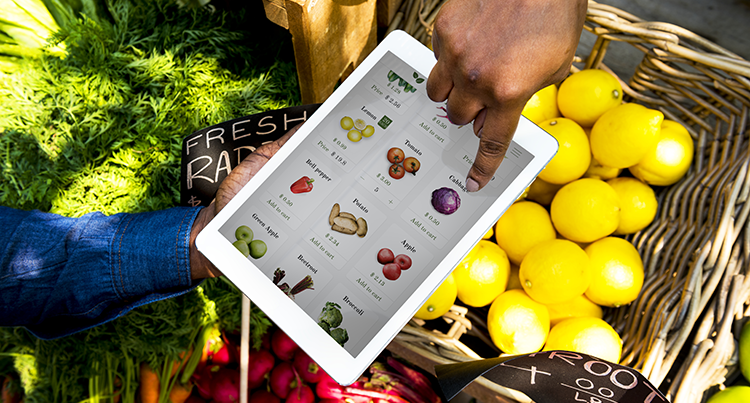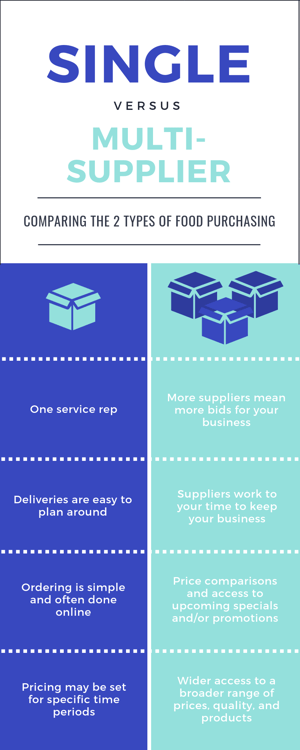One of the first major cost control points for food cost is food purchasing. What and how much to order, information from the sales mix as well as anticipated business levels and current inventory all contribute to the successful outcome of food purchasing for any business. It’s often like trying to hit a target that has several different parts that often seem to be moving in different directions all at the same time!
Understanding purchasing and applying straightforward approaches to it helps gain organization and, in turn, control over current inventory levels as well as the quantities to be ordered.

Sufficient quantities, lead times, product quality as well as freshness all play a huge part in the purchasing function, and let’s not forget the role that price plays in the equation as well! The better the purchasing system you create, the better you will be at managing costs long before the product even arrives in your kitchen.
Before you even have the product in hand, you need to organize your supplier. But, there are a few different ways you could go: single or mulit-supplier. They both have their benefits and disadvantages and have been a constant topic of debate in food service. Let’s look at some advantages and disadvantages of both approaches to purchasing to help you decide what option works best for you:

A single or exclusive supplier relationship may pay off in some situations. With an exclusive supplier deal, you may be able to lock in some contract pricing for a predetermined amount of time. This helps to lay the groundwork for new or seasonal menu planning and standardization when you know the price will be constant during the length of the contract and your menu cycle. With an increased spend with one supplier; you may be able to garner better customer service.
On the other hand, with multiple suppliers, it’s not uncommon to play one supplier against another for the best price. Purchasing becomes much more dynamic as suppliers work to compete for your business based on price, quality and any value-added services they bring to the table. You also have the added security knowing that if one supplier runs into business difficulties, you have another supplier to fall back on.
Choosing a single or multi-supplier can be a tough decision to make and it depends on your business and how you work. To make things easier, here are some tips to keep in mind when coming to your final decision:
- Look at your current methods for food purchasing, do they work?
- If you are a franchise owner, do you have predetermined suppliers in place with national contracts?
- Outside of the chains or franchises, it’s important to consider the advantages and disadvantages of having a single supplier or going the route of having multiple suppliers.
- Every business is unique and one supplier system may work well for one establishment and may not work well for another. Ensure you choose what will work best for your business.
- Continually work on supplier development on an on-going basis.
- Regardless of which supplier strategy you use; supplier evaluation is critical to your success.
- Keep in tune with where your purchasing dollars are going and to which suppliers; remember effective product purchasing is an essential part of cost control in your restaurant.
- Create a supplier checklist so that you can stay up to date on their performance.
- Design a spreadsheet to see how much you spend with each supplier every month. Now annualize it. Some suppliers can think better when looking at an annual spend and what that might mean to their business. It has a lot to do with the lifetime value of a customer – YOU!
- Do another spreadsheet to monitor what you spend your money on, i.e. the amounts you spend on proteins – meat, seafood, dairy as well as produce and dry goods. This will help you see where your money is going and how much is being spent.
Purchasing produce for your business is the key to getting everything going, without produce, you have nothing to sell. This is why purchasing produce is such an important management task that requires time and effort to make sure it works well. Setting up a supplier strategy that meets all your restaurant needs will provide the starting point for cost control in your business and ensure the rest of your processes can work and run effectively.
Learn more ways to save money with our Better food cost management course.
.png?width=972&name=Typsy%20%20We%20teach%20hospitality%20to%20the%20world%20%20typsy.com%20blog%20banner%20_%20(1).png)
Typsy’s 1000+ hospitality lessons are practical, effective, and fun! You can learn more about everything from finance to service and leadership skills.
Best of all, you can access Typsy as and when it suits you.
Learn your way - starting today.
 |
Mike Walmsley, is the author of '69 Tips For Better Food & Beverage Profit'. Stay tuned for the next book in the series, '101 More Tips For Better Food & Beverage Profit', coming out soon on Amazon!
|
You might also like: